
Yakumo Koizumi , born Patrick Lafcadio Hearn, was an Irish-Greek writer, translator, and teacher who introduced the culture and literature of Japan to the West. His writings offered unprecedented insight into Japanese culture, especially his collections of legends and ghost stories, such as Kwaidan: Stories and Studies of Strange Things. Before moving to Japan and becoming a Japanese citizen, he worked as a journalist in the United States, primarily in Cincinnati and New Orleans. His writings about New Orleans, based on his decade-long stay there, are also well-known.
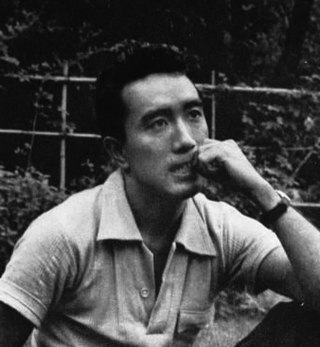
Kimitake Hiraoka, also known as Yukio Mishima, was a Japanese author, poet, playwright, actor, model, Shintoist, nationalist, and founder of the Tatenokai. Mishima is considered one of the most important writers of the 20th century. He was considered for the Nobel Prize in Literature in 1968, but the award went to his countryman and benefactor Yasunari Kawabata. His works include the novels Confessions of a Mask and The Temple of the Golden Pavilion, and the autobiographical essay Sun and Steel. Mishima's work is characterized by "its luxurious vocabulary and decadent metaphors, its fusion of traditional Japanese and modern Western literary styles, and its obsessive assertions of the unity of beauty, eroticism and death", according to author Andrew Rankin.

Japanese literature throughout most of its history has been influenced by cultural contact with neighboring Asian literatures, most notably China and its literature. Early texts were often written in pure Classical Chinese or lit. 'Chinese writing', a Chinese-Japanese creole language. Indian literature also had an influence through the spread of Buddhism in Japan.

Motojirō Kajii was a Japanese writer in the early Shōwa period known for his poetic short stories. Kajii's works included Remon, "Shiro no aru machi nite". Fuyu no hi and Sakura no ki no shita ni wa. His poetic works were praised by fellow writers including Yasunari Kawabata and Yukio Mishima. Today his works are admired for their finely tuned self-observation and descriptive power.
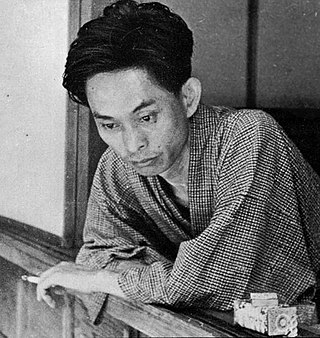
Yasunari Kawabata was a Japanese novelist and short story writer whose spare, lyrical, subtly shaded prose works won him the Nobel Prize in Literature in 1968, the first Japanese author to receive the award. His works have enjoyed broad international appeal and are still widely read.

Naoya Shiga was a Japanese writer active during the Taishō and Shōwa periods of Japan, whose work was distinguished by its lucid, straightforward style and strong autobiographical overtones.
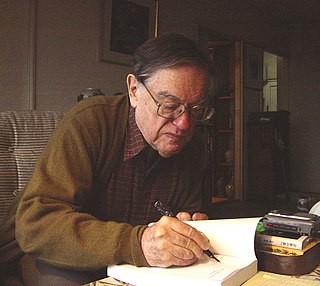
Donald Lawrence Keene was an American-born Japanese scholar, historian, teacher, writer and translator of Japanese literature. Keene was University Professor emeritus and Shincho Professor Emeritus of Japanese Literature at Columbia University, where he taught for over fifty years. Soon after the 2011 Tōhoku earthquake and tsunami, he retired from Columbia, moved to Japan permanently, and acquired citizenship under the name Kīn Donarudo. This was also his poetic pen name and occasional nickname, spelled in the ateji form 鬼怒鳴門.
Snow Country is a novel by the Japanese author Yasunari Kawabata. The novel is considered a classic work of Japanese literature and was among the three novels the Nobel Committee cited in 1968, when Kawabata was awarded the Nobel Prize in Literature.
The Dancing Girl of Izu or The Izu Dancer is a short story by Japanese writer and Nobel Prize winner Yasunari Kawabata first published in 1926.
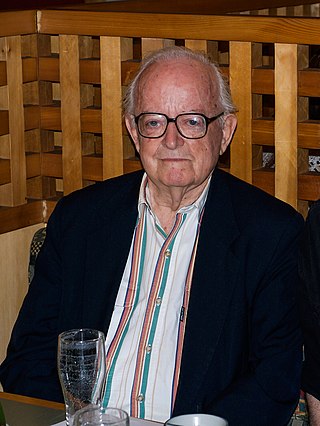
Edward George Seidensticker was an American noted post-World War II scholar, historian, and preeminent translator of classical and contemporary Japanese literature. His English translation of the epic The Tale of Genji, published in 1976, was especially well received critically and is counted among the preferred modern translations.

Hideo Kobayashi was a Japanese author, who established literary criticism as an independent art form in Japan.
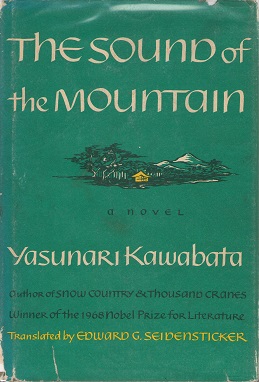
The Sound of the Mountain is a novel by Japanese writer Yasunari Kawabata, serialized between 1949 and 1954, and first published as a standalone book in 1954 by Chikuma Shobō, Tokyo.

Beauty and Sadness is a 1961–63 novel by Nobel Prize-winning Japanese author Yasunari Kawabata. The novel is narrated from the present and past perspective of the characters and how they differed from each other's point of view. A novel that provokes the mind and examines the relationship between life events, it is considered one of Kawabata's best works, though it has on occasion been criticised for its depictions of female homosexuality.

Valdo H. Viglielmo was a prominent scholar and translator of Japanese literature and works of Japanese philosophy.

Bungei is a Japanese literary magazine published by Kawade Shobō Shinsha.
Buddhist modernism are new movements based on modern era reinterpretations of Buddhism. David McMahan states that modernism in Buddhism is similar to those found in other religions. The sources of influences have variously been an engagement of Buddhist communities and teachers with the new cultures and methodologies such as "Western monotheism; rationalism and scientific naturalism; and Romantic expressivism". The influence of monotheism has been the internalization of Buddhist gods to make it acceptable in modern Western society, while scientific naturalism and romanticism has influenced the emphasis on current life, empirical defense, reason, psychological and health benefits.
Richard John Bowring is an English academic serving as Professor of Japanese Studies at the University of Cambridge and an Honorary Fellow of Downing College. In 2013, Bowring was awarded the Order of the Rising Sun 3rd Class, Gold Rays with Neck Ribbon for contributions to the development of Japanese studies, Japanese language education and the promotion of mutual understanding between Japan and the United Kingdom.
Modern scientific research on the history of Zen discerns three main narratives concerning Zen, its history and its teachings: Traditional Zen Narrative (TZN), Buddhist Modernism (BM), Historical and Cultural Criticism (HCC). An external narrative is Nondualism, which claims Zen to be a token of a universal nondualist essence of religions.

The 1968 Nobel Prize in Literature was awarded to the Japanese writer Yasunari Kawabata (1899–1972) "for his narrative mastery, which with great sensibility expresses the essence of the Japanese mind." He is the first Japanese recipient of the prize.
The Moon in the Water: Understanding Tanizaki, Kawabata, and Mishima is a 1979 non-fiction book by Gwenn Boardman Petersen, published by University of Hawaii Press. It discusses translated works by Junichiro Tanizaki, Yasunari Kawabata, and Yukio Mishima.













